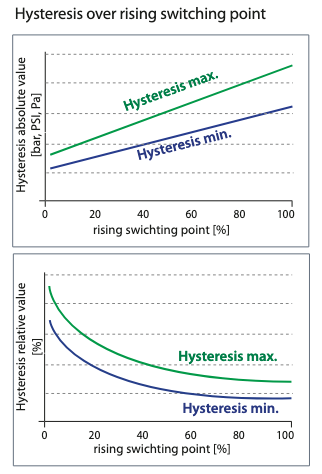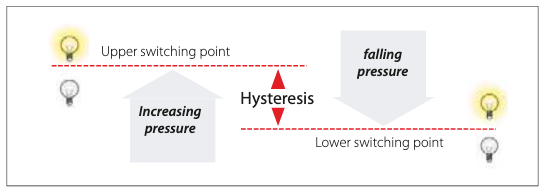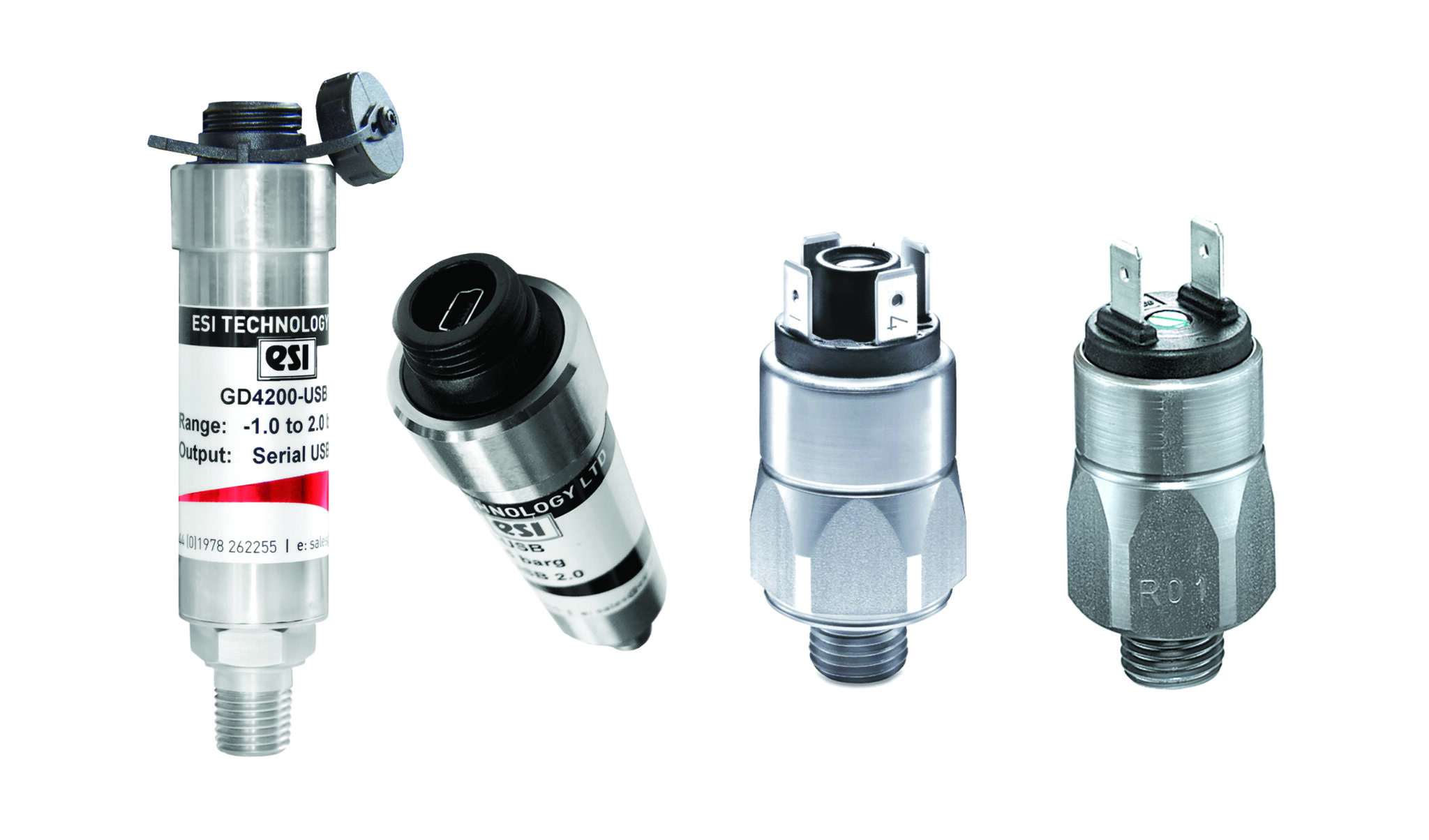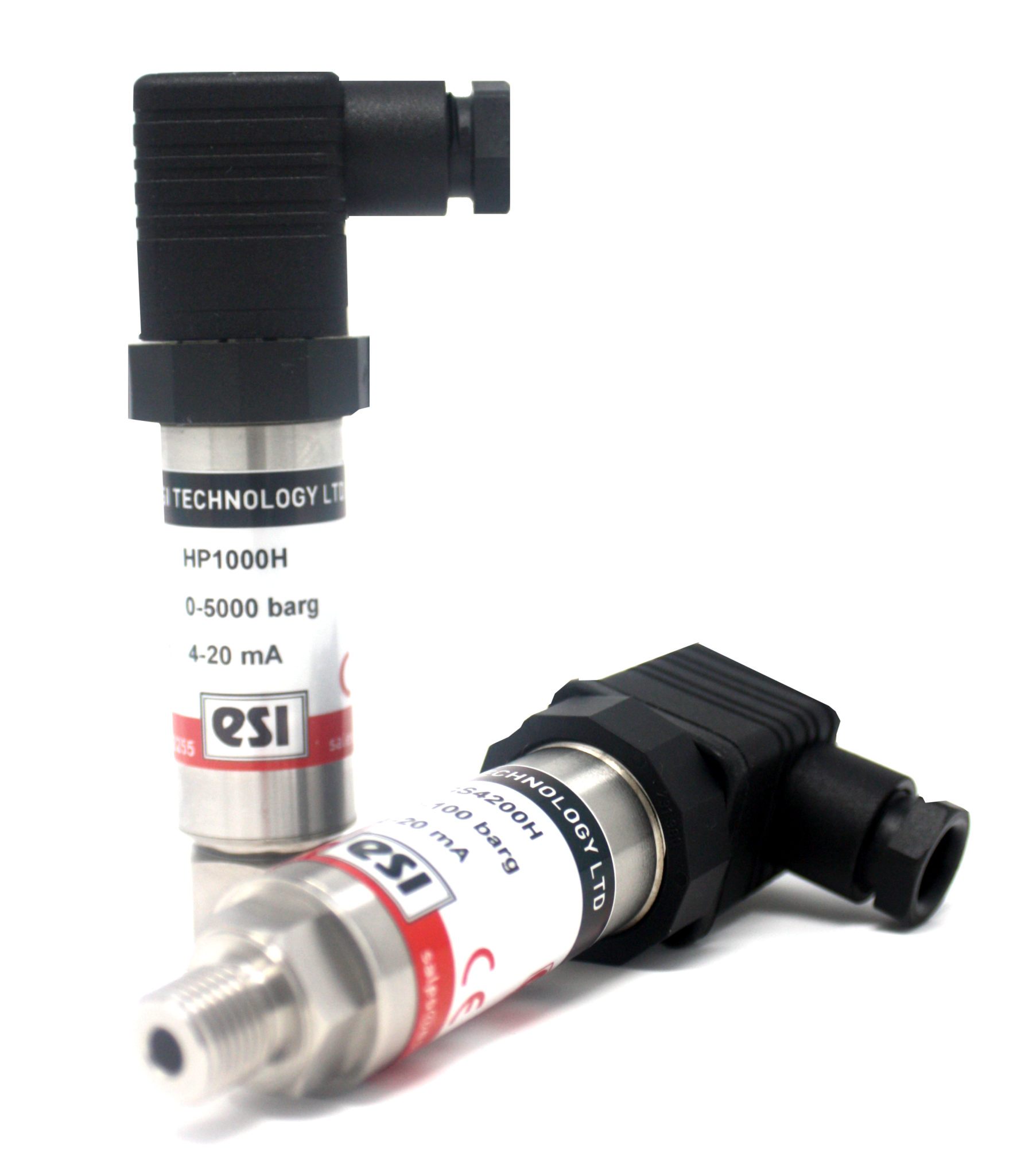Rising / falling switching point
 The pressure difference between the rising (upper) and falling (lower) switching points (refer to the figure, e.g. NO) is known as hysteresis (switch-back difference). Hysteresis has no constant value due to the structural layout of a mechanical pressure switch. In absolute values, the hysteresis is also the smallest with the smallest adjustment range. The hysteresis increases with increasing adjustment range.
The pressure difference between the rising (upper) and falling (lower) switching points (refer to the figure, e.g. NO) is known as hysteresis (switch-back difference). Hysteresis has no constant value due to the structural layout of a mechanical pressure switch. In absolute values, the hysteresis is also the smallest with the smallest adjustment range. The hysteresis increases with increasing adjustment range.
Hysteresis can be set at SUCO ESI in range from approx. 10 % (at end of adjustment range) to 30 % or higher (at start of adjustment range), related to the respective switching point for hex 27 and 30 A/F pressure switches with adjustable hysteresis. Due to their design, pressure switches with an over pressure resistance of 100 bar have smaller hysteresis than the series with 300 bar or 400 bar overpressure resistance. Piston pressure switches have a slightly larger hysteresis than diaphragm pressure switches.
The specifications in the catalogue only represent typical average values. Please ask about the possible setting ranges you may require. Our electronic pressure switches are excellently suited to extremely low or high hysteresis. The lowest possible hysteresis is set if nothing is specified in the order.
Switching Frequency
The switching frequency provides information on the possible number of cycles in one minute. The value of 200/min specified by us is a guideline value. Higher switching frequencies can be attained de- pending on switch type and conditions of use. Sealing materials The priority in sealing material selection is the chemical resistance. The temperature range only becomes a selection criterion when different sealing materials are suitable for the medium.
Let us offer the pressure switch or pressure transducer that best fits your application.
Contact us > Phone: 1-800-473-7313 | Email: sales@sucoesi.com





